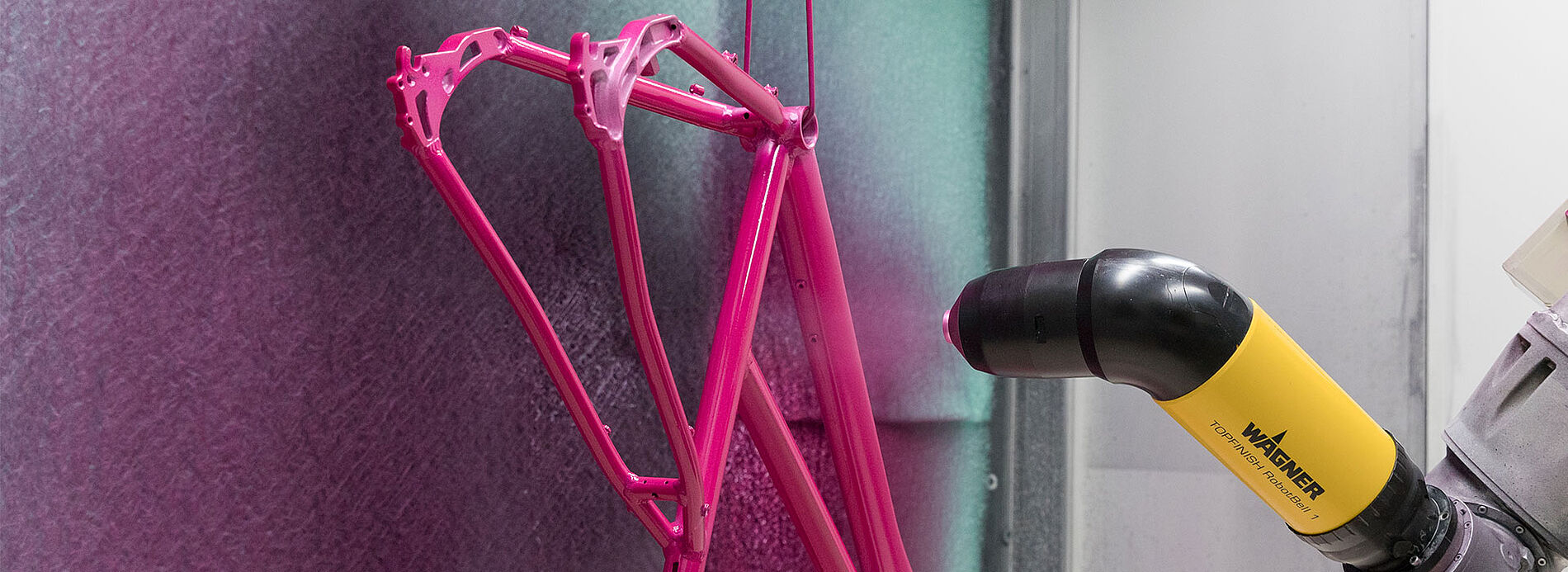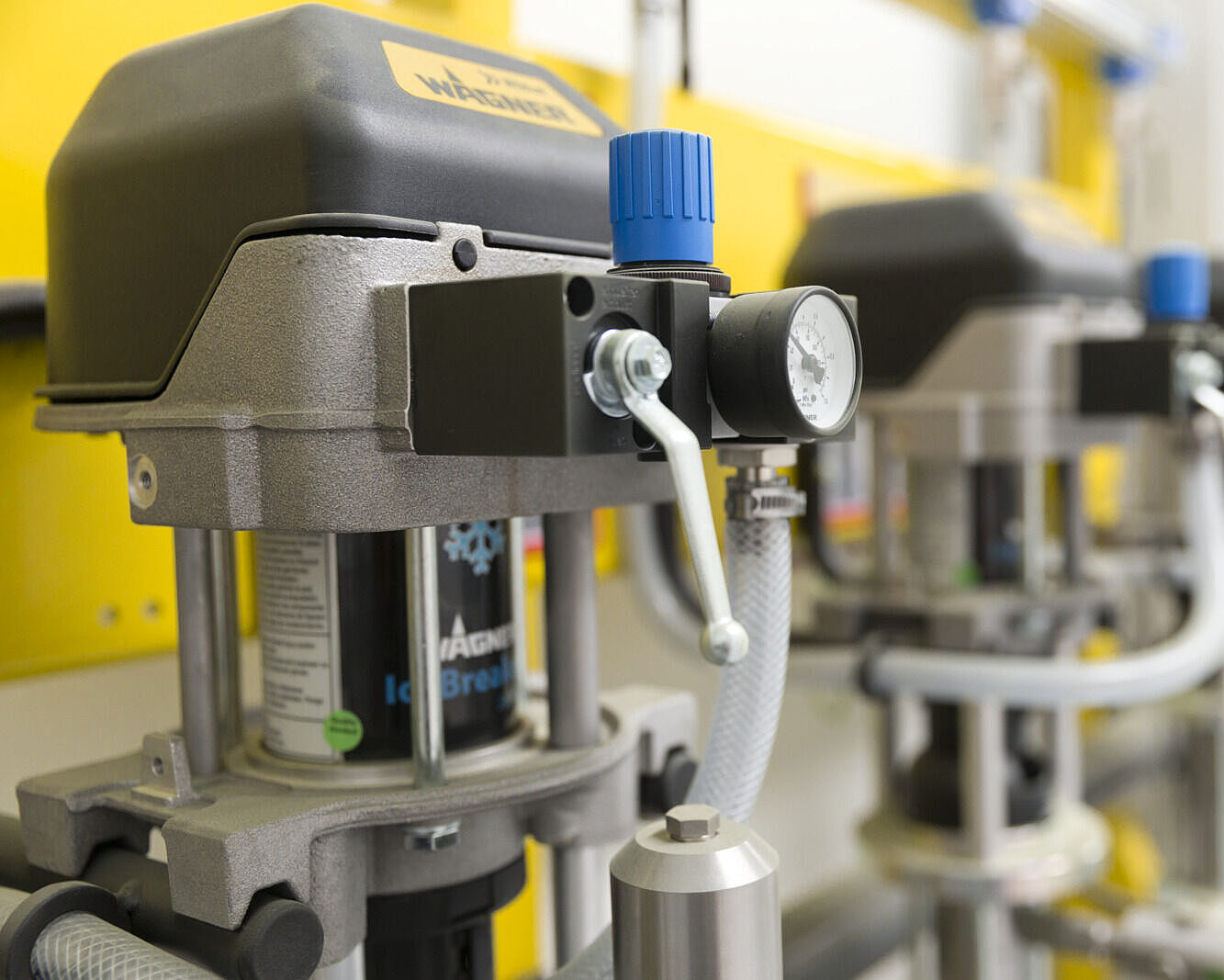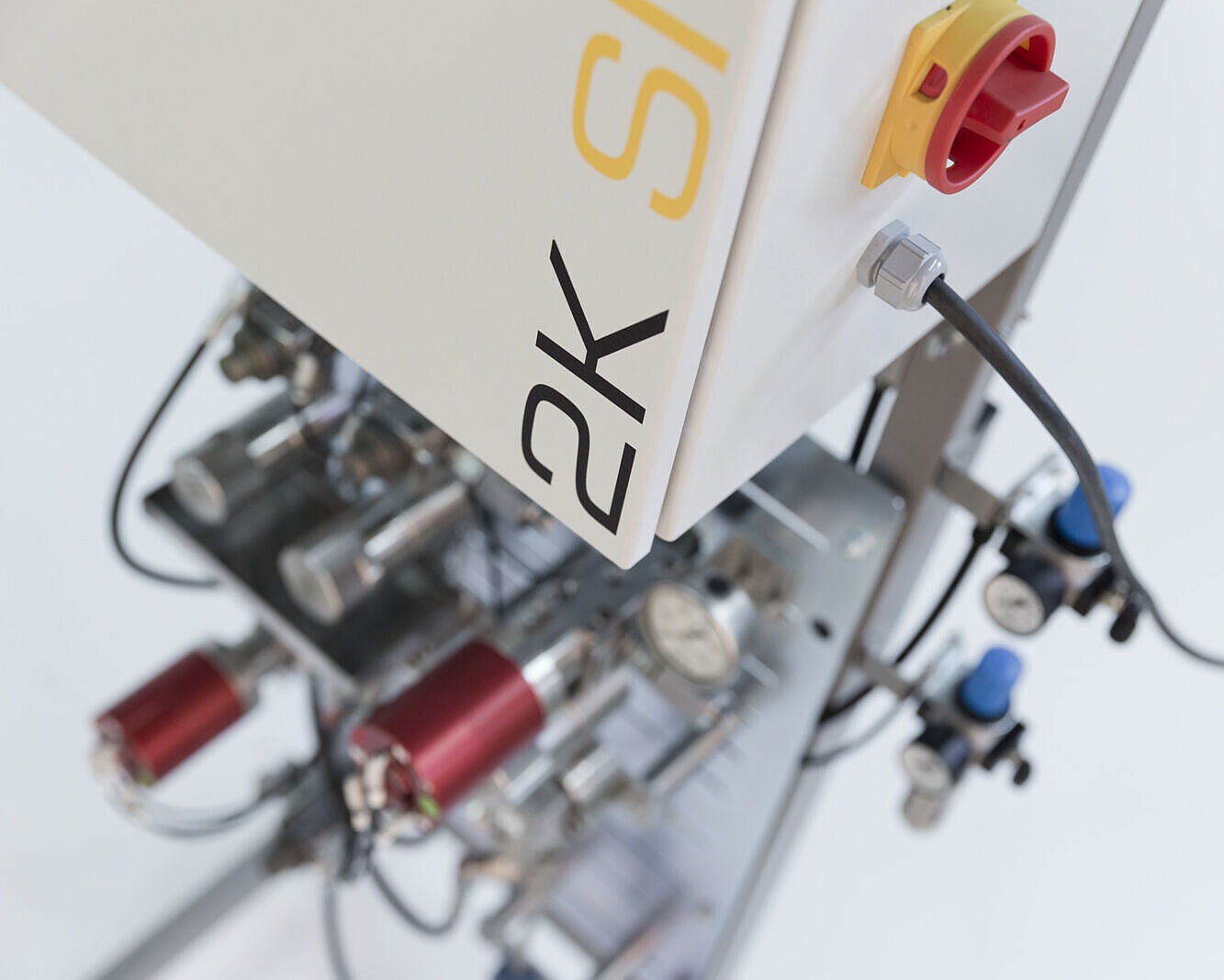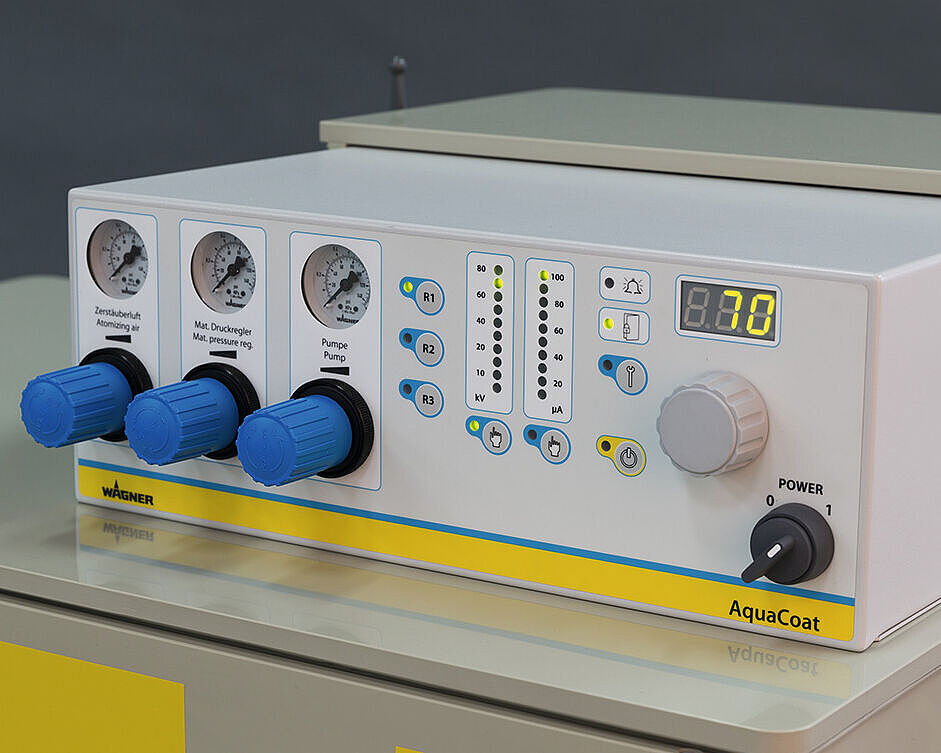Liquid coating for industrial products
For high-quality surfaces with an excellent gloss level, liquid coating is the first choice for almost all substrates. Thanks to the large selection of suitable materials and a wide range of colors, including metallic, high-gloss and effect paints, there are virtually no limits to the customization of surfaces. By using functional coatings, for example, the corrosion or fire resistance of a surface can be optimized or the electrical conductivity can be specifically adjusted.
WAGNER offers components and solutions for the automatic and manual application of liquid paints using various atomization technologies (airless, AirCoat, airspray, high rotation). These include mechanical and electronic mixing and dosing systems for 2K to 4K materials, high-performance feeding pumps, modular booth systems and easy-to-operate control units. Reliability, durability and process-reliable surface quality are at the heart of all solutions.















